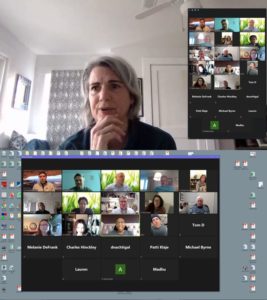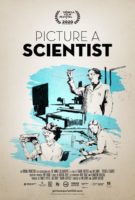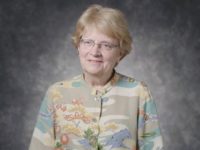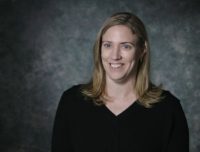Dec 4, 2020 — The Pierce Laboratory Screens ‘Picture A Scientist’

Town Hall Discussion
 Picture A Scientist is a 93-minute film that was an official selection of the 2020 Tribeca Film Festival. The film focuses on challenges women face in science and how they have successfully overcome them. The Pierce Laboratory shared this film with the entire laboratory in a private virtual screening. We subsequently met on December 4, 2020 to share our impressions of the film in a lively Town Hall. The event was sponsored by the Pierce Laboratory, and was a joint project of the Pierce Diversity and Climate Committees.
Picture A Scientist is a 93-minute film that was an official selection of the 2020 Tribeca Film Festival. The film focuses on challenges women face in science and how they have successfully overcome them. The Pierce Laboratory shared this film with the entire laboratory in a private virtual screening. We subsequently met on December 4, 2020 to share our impressions of the film in a lively Town Hall. The event was sponsored by the Pierce Laboratory, and was a joint project of the Pierce Diversity and Climate Committees.
Picture A Scientist chronicles the groundswell of researchers who are writing a new chapter for women scientists. Biologist Nancy Hopkins, chemist Raychelle Burks, and geologist Jane Willenbring lead viewers on a journey deep into their own experiences in the sciences, ranging from brutal harassment to years of subtle slights. Along the way, from cramped laboratories to spectacular field stations, we encounter scientific luminaries – including social scientists, neuroscientists, and psychologists – who provide new perspectives on how to make science itself more diverse, equitable, and open to all.

Nancy Hopkins is a molecular biologist and professor of biology emerita at the Massachusetts Institute of Technology. She is known for her research identifying genes required for early development of the zebrafish and genes that predispose adult fish to cancer, as well as for her work promoting equality of opportunity for women scientists in academia. Recently she has addressed the under-representation of women as founders and board members of biotech start-ups. She is a member of the National Academy of Sciences, the Institute of Medicine of the National Academy, and the American Academy of Arts and Sciences.

Raychelle Burks is a professor of analytical chemistry at American University in Washington, D.C. Her research focuses on developing low-cost colorimetric sensors for detecting chemicals of forensic interest, including explosives and regulated drugs. As a science communicator, Burks has appeared on the Science Channel’s Outrageous Acts of Science, the American Chemical Society’s Reactions videos, Royal Society of Chemistry podcasts, and at genre conventions such as DragonCon and GeekGirlCon. Burks was awarded the 2020 American Chemical Society Grady-Stack award for excellence in public engagement.

Jane Willenbring is a geomorphologist and associate professor of geological sciences at Stanford University, and is the director of the Stanford Cosmogenic Isotope Laboratory. Willenbring’s research examines the evolution of the Earth’s surface, especially how landscapes are affected by tectonics, climate change, and life. She is a Geological Society of America Fellow, the recipient of the Antarctica Service Medal, the National Science Foundation Career Award, and in 2020 was named one of Stanford’s future Gabilan Faculty Fellows.
Click here to review the Discussion Guide for in-depth behind the scenes information on the making of the film and the people who made it happen. To learn more about the movie and ways you can watch it and get involved click here.

